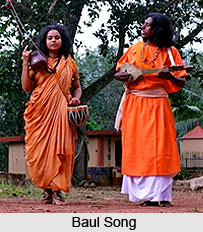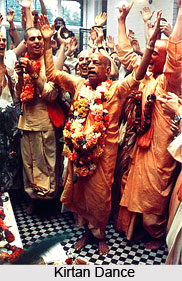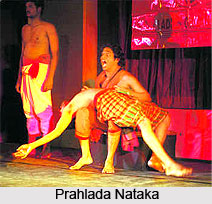Theatre Companies in Eastern India is infested with the eastern charm and the influence of the various political winds, the socio-political features and the eastern enigma.
 Theatre companies in Assam are the pillars behind the success of commercial theatre in Assam. Assamese theatre has a glorious history. The form of theatre called Ankiya Nat or Bhaona, composed by Vaishnava reformers like Sankaradeva and Madhavadeva are usually staged in community halls termed nam-ghar. There are also some other traditional performation oriented genres such as Bhaoriya, Dhuliya, and Oja-Pali. The theatre companies in Assam stages all kinds of shows and dramas all across the state and neighbouring region.
Theatre companies in Assam are the pillars behind the success of commercial theatre in Assam. Assamese theatre has a glorious history. The form of theatre called Ankiya Nat or Bhaona, composed by Vaishnava reformers like Sankaradeva and Madhavadeva are usually staged in community halls termed nam-ghar. There are also some other traditional performation oriented genres such as Bhaoriya, Dhuliya, and Oja-Pali. The theatre companies in Assam stages all kinds of shows and dramas all across the state and neighbouring region.
The theatre companies in Assam produced all kinds of plays, mythological stories, dance dramas, comedy, and romance and so on. Many one-act competitions used to be held all over Assam, and there were dramatists who specialized in writing short scripts and the theatre companies in Assam sponsored these competitions. The theatre companies in Assam brought about talented actors from all corners of the state and also hanging rows of kerosene lamps, gaslight, or pressure lamps of the brand name Petromax, in order to lit up the theatre room brightly. Theatre companies in Assam tried to bring realism by using three-dimensional set pieces. However, realistic scenography entered only in the late 1940s, replacing painted backdrops. Fashionable sets, clean uniformed stages, have served as theatre designs by the theatre companies in Assam. Costumes were usually hired from the theatre companies in Assam. Phani Sarma, and creative directors like Dulal Roy are some of the famous names associated with the theatre companies in Assam.
 Theatre groups in West Bengal, which began as an expression of humanizing the mass, within no time, stood apart as an archetypal form of manifestation. In Bengal, theatre did not get initiated within one day. Bengali drama has a deep seated relation with folk theatres in India, specific to West Bengal, in forms like Kabigan and Kirtan dance, and Baul songs, Chhau, Gajan, Jatra and even Paalagaan, which were then mainly performed in open grounds of Bengal. These different performing art styles not only gave birth to the modish concept of Bengali theatre but paved the way for professional theatres and also ushered in the concept of establishing the theatre companies in West Bengal. The major breakthrough in Bengali theatre occurred, however, with the introduction of the seed of communism in Bengali theatre. With the scaffolding of Nabanna, written by a communist playwright and actor Bijan Bhattacharya and with the establishment of the various theatre companies in West Bengal, and of course with the establishment of Indian People`s Theatre Association (IPTA). In 1942, Bengali theatre gained that desired contour whilst ushering in a new era of cultural awakening among the people of India. This was the time when the Bengali intelligentsia witnessed the enculturation in Indian Drama. Bohurupee, a prominent theatre group of West Bengal, was formed to popularise this further. After Bohurupee there was a meteoric rise of other theatre companies in West Bengal. Bengali theatre was then in the pinnacle. Even today, the art form has not faded away. Some theatre companies like Swapnasandhani, Chetana, Sundaram etc are being established to re-interpret and integrate the significant facts of people`s lives in the present epoch. The journey of theatre companies in West Bengal is thus long but is rich unfolding the rich heritage of the changing traditions of Bengali theatre.
Theatre groups in West Bengal, which began as an expression of humanizing the mass, within no time, stood apart as an archetypal form of manifestation. In Bengal, theatre did not get initiated within one day. Bengali drama has a deep seated relation with folk theatres in India, specific to West Bengal, in forms like Kabigan and Kirtan dance, and Baul songs, Chhau, Gajan, Jatra and even Paalagaan, which were then mainly performed in open grounds of Bengal. These different performing art styles not only gave birth to the modish concept of Bengali theatre but paved the way for professional theatres and also ushered in the concept of establishing the theatre companies in West Bengal. The major breakthrough in Bengali theatre occurred, however, with the introduction of the seed of communism in Bengali theatre. With the scaffolding of Nabanna, written by a communist playwright and actor Bijan Bhattacharya and with the establishment of the various theatre companies in West Bengal, and of course with the establishment of Indian People`s Theatre Association (IPTA). In 1942, Bengali theatre gained that desired contour whilst ushering in a new era of cultural awakening among the people of India. This was the time when the Bengali intelligentsia witnessed the enculturation in Indian Drama. Bohurupee, a prominent theatre group of West Bengal, was formed to popularise this further. After Bohurupee there was a meteoric rise of other theatre companies in West Bengal. Bengali theatre was then in the pinnacle. Even today, the art form has not faded away. Some theatre companies like Swapnasandhani, Chetana, Sundaram etc are being established to re-interpret and integrate the significant facts of people`s lives in the present epoch. The journey of theatre companies in West Bengal is thus long but is rich unfolding the rich heritage of the changing traditions of Bengali theatre.
 Bohurupee, Rupmahal Theatre, Nandikar, Rabindra Nagar Natyaayudh, Theatre Formation Paribartak, Swapnasandhani, Mangolik, Natyoshala are the famous Theatres of Bengal.
Bohurupee, Rupmahal Theatre, Nandikar, Rabindra Nagar Natyaayudh, Theatre Formation Paribartak, Swapnasandhani, Mangolik, Natyoshala are the famous Theatres of Bengal.
Rich in history and pregnant with a copious past, theatre in Orissa offered Indian theatre an ethnographic feature. Widely known as "Gananatya", "Lokanatya" or "Opera", the Jatra in Orissa is considered as the old form of Oriya theatre. However, the very seed of contemporaneity in Oriya theatre was sown in the year 1872, when the students of the Catholic Mission School in Cuttack enacted an English play by Oliver Goldsmith. That was the beginning of the rise of theatre companies in Orissa to carry the legendary history of Indian theatre to further maturity. The establishment of a permanent stage in the year 1875, in Mahanga village by Jaga Mohan lala gave birth to the modish concept of theatre stage whilst ushering in the novel idea of the establishment of the theatre companies in Orissa to spread the magic of this eminent art form. This was indeed the raw beginning. A number of professional theatre companies in Orissa have emerged. One was owned by Banamali Pati.
However, the major theatre companies in Orissa were then the touring parties and this continued till the fag end of the 1940s when almost simultaneously two major theatre companies emerged in Cuttack and a third one in Puri. The changes were slowly induced. Gone are the days of Raslila and Prahlada Nataka. With the establishment of the theatre companies in Orissa like the Janata theatre, Kalasri theatre and Annapurna theatre, Oriya theatre gained that chic contour which it was lacking till then. The theatre of Bengal, Orissa and Assam confirm the theatricality of the Eastern zone.




















